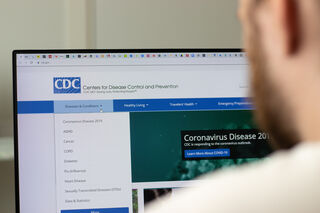Health
What Builds Trust in Health Care Institutions?
The psychology of trust should guide our response to health crises.
Posted February 1, 2022 Reviewed by Michelle Quirk
Key points
- The Centers for Disease Control and Prevention and other health agencies have struggled to communicate with the public during COVID-19.
- Building trust is at the center of effective communication during a health crisis.
- Rather than focus only on getting accurate information to people, health officials should think about what kinds of communication build trust.
In January of 2022, at the beginning of a new year that has so far brought renewed surges of COVID-19 cases in the form of an even more contagious variant, the New York Times published an article entitled “For CDC’s Walensky, A Steep Learning Curve on Messaging.” The article reviewed some of the perceived missteps that the Centers for Disease Control and Prevention's (CDC’s) director Rochelle Walensky has made in regard to communicating ever-changing COVID-19 guidelines to members of the American public. The article pointed to some areas of tension between Dr. Walensky and two other prominent health officials, Dr. Anthony Fauci and Dr. Vivek Murthy, specifically on the decision to reduce isolation time from 10 to 5 days for people with COVID-19 infection (vaccinated or not) without requiring a negative test first. The lack of a united front on issues such as these has certainly contributed to confusion among Americans about what they are supposed to do in various scenarios related to the virus.
Public Trust
While the Times article focuses on “messaging,” and particularly on a failure to provide consistent messaging from a range of government health officials, it’s not entirely clear that “messaging” is what’s at the heart of the problem. While it’s true that there are issues surrounding the way CDC communicates with Americans, the real heart of the problem seems to have more to do with a way in which public officials in this crisis are not understanding and paying enough attention to the issue of public trust.

It may be no surprise that evidence suggests that trust in public officials increases the likelihood that people will follow directions in a crisis such as a pandemic. This is why it’s essential that officials understand how trust is built in these situations and how to communicate in a way that will foster this trust. They must stop seeing communication as merely a way to get information to people but also, and maybe more importantly, as a medium to convey trustworthiness. They should therefore constantly be asking themselves: what is the best way for me to craft this message so that it will encourage trust? Because health officials may be too busy or not have the requisite training needed to craft messages in this way, it is important that there be at least one person on staff at relevant health agencies who understands how to communicate well during a crisis.
Consistency and Expectations
Trust is often signaled by consistency and relatively standard and regular expectations. This means that people will expect to hear from health officials at regular intervals and that they expect the communications to build on themselves rather than be full of shocks and reversals. As we have obviously seen with this pandemic, it is impossible for there to be no surprises. We’ve seen changes in recommendations on masks, isolation time, and testing, among other things. What’s important in these situations is for the health official to couch these changes in the context of things that aren’t changing and to acknowledge that the changes themselves might be jarring. Even these small gestures can make the delivery of unexpected news easier. When people feel that they can depend on officials to communicate in a timely fashion and gesture toward and understand how they might feel about unexpected news, they begin to trust these officials.
Some other recommendations for building trust in a health crisis are including a diverse set of experts as communicators, modeling the behavior health officials would like to see in the public, and ensuring that information is always as transparent as possible. Health officials should never allude to something that cannot or will not be shared with the public and should work extra hard to reassure people that when they do not know something, it does not mean they are withholding information. It is also important that health officials communicate with each other and try to reach agreement on scientific issues before they go to the public.
Good communication during a crisis like a pandemic is about more than simple accuracy of information and consistency among health officials. It is fundamentally about what does and does not build trust. Once crisis communications become more focused on this aspect of the public’s relationship with health officials, then we will be able to make more headway in ensuring that more Americans follow guidelines that keep us all safe.


